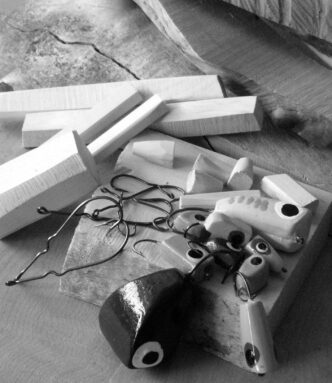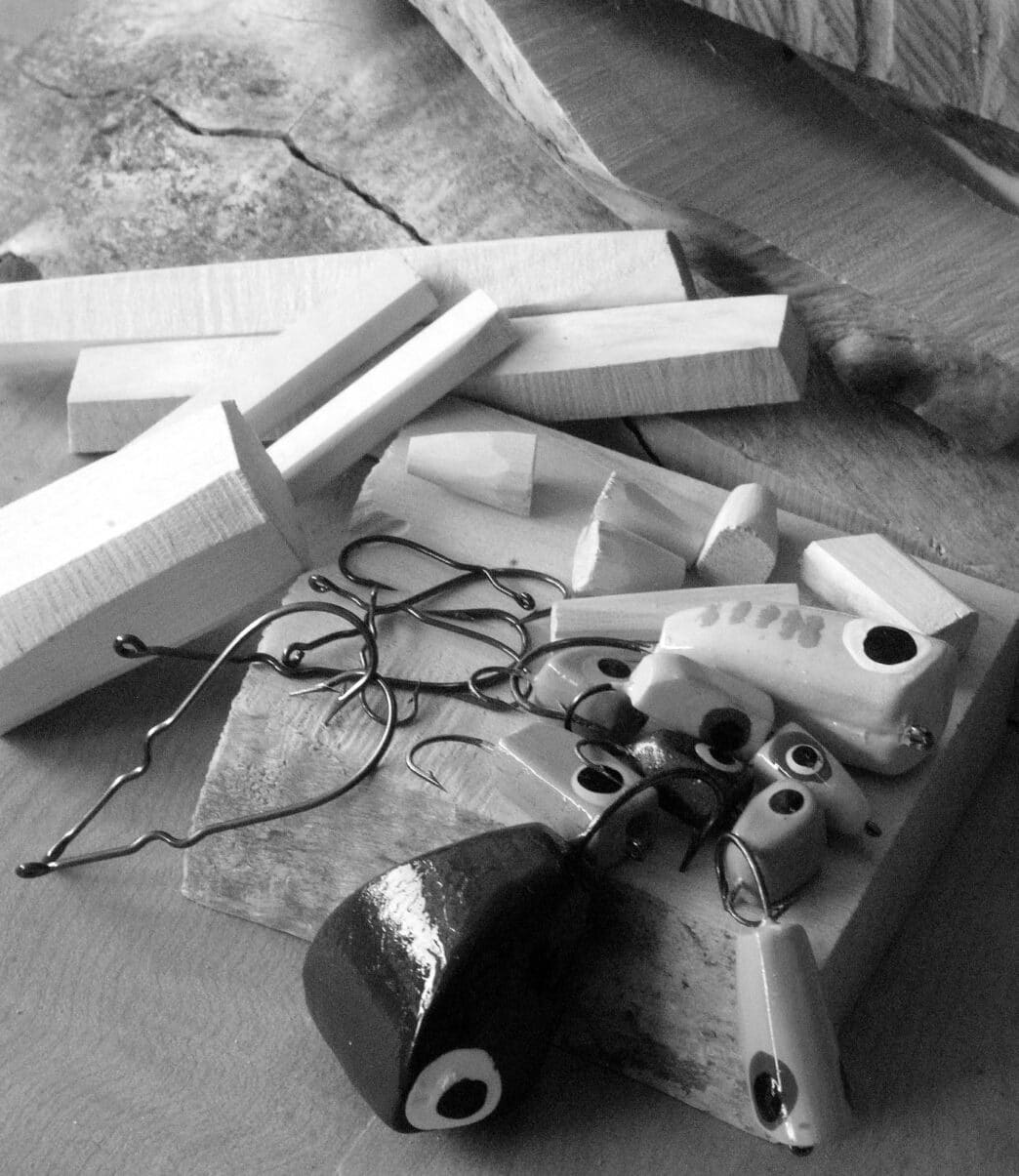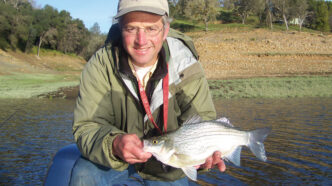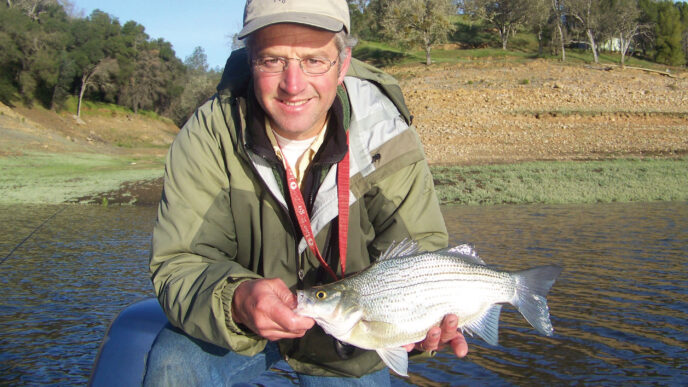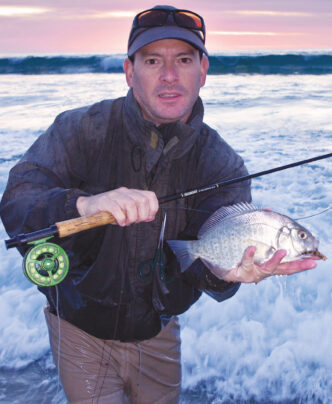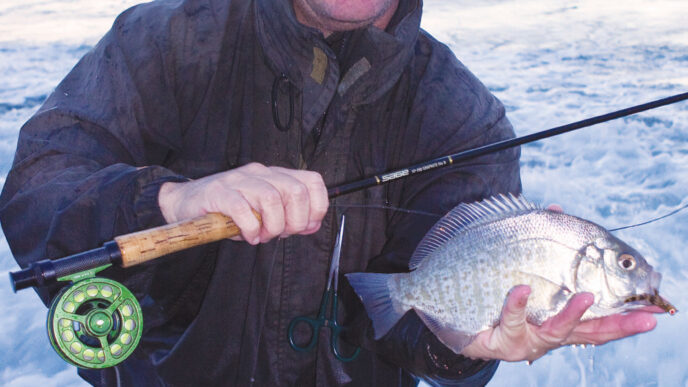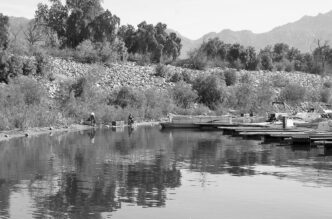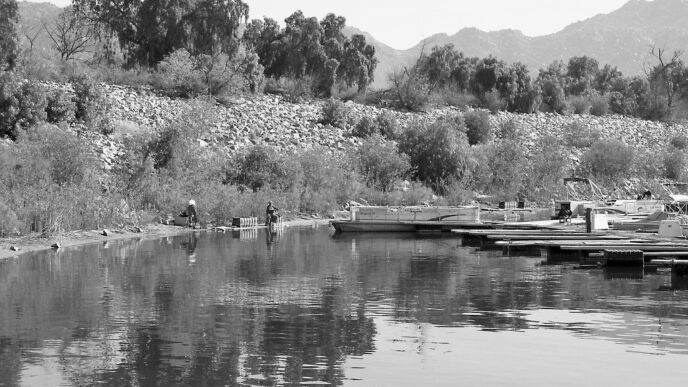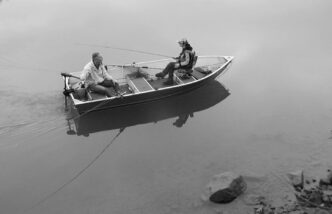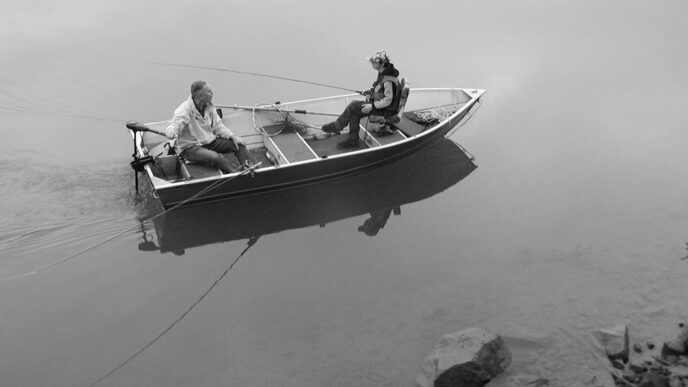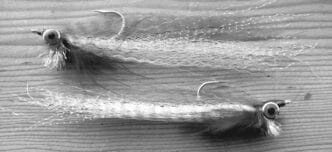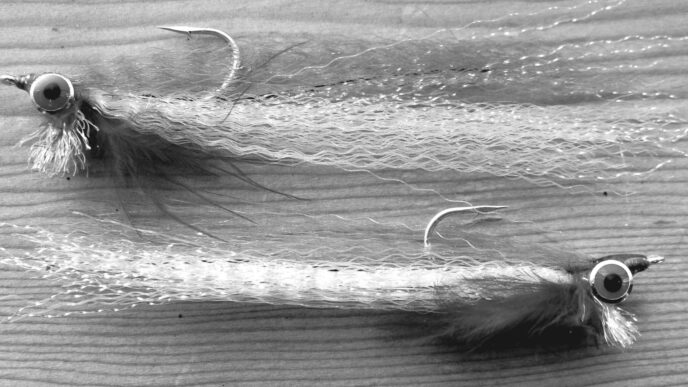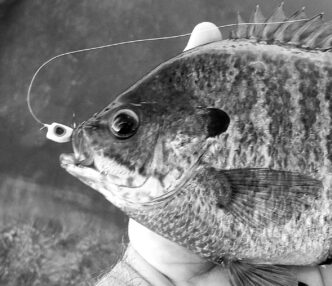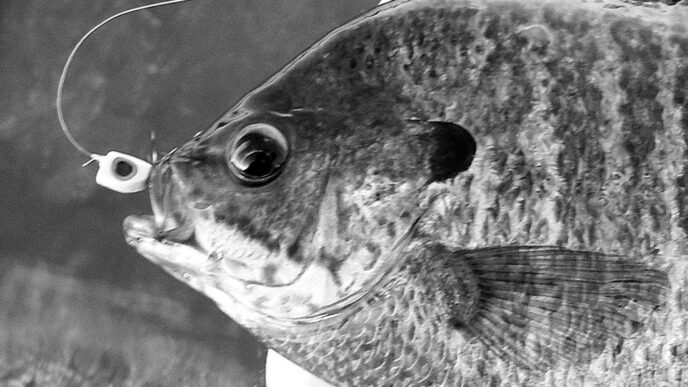The sun, which made itself scarce over the winter months, is becoming more of a familiar presence once again, the waters are warming, and green shoots are everywhere — on the banks of our ponds and lakes, at least, if not in a lot of places in the economy. The spring top-water bass bite is upon us. In the January/February “Warmwater Angler” column, I discussed the collection of tools that you need to pull together to begin building bass poppers. Actually, though, building a popper is itself worth discussing at length.
Bass poppers need to be built to last, because they tend to take a horrible beating, especially because often you fish in a tangled jungle of downed limbs and overhanging brush. That’s where the big boys hide. Strength of materials means a lot here. I once had a commercially-made popping bug shatter like glass against the side of a cinder-block retaining wall when I made a cast that was just a bit too long. The cork body disintegrated with a loud pop — the only one it would ever make — and all I had left was a hook with some tail feathers. These days, I build better bodies that can take a lot of this kind of punishment without failing. You can, too.
Hard Bodies
Cork, fragile as it is, is also the traditional material for bass poppers. The first cork poppers were probably just that, a bottle cork stuck on a hook with some feathers tied on it. Cork is indeed an attractive material for making bass popper bodies. It is very light for its bulk, so it creates a popper body that “floats like a butterfly, stings like a bee,” to borrow Muhammad Ali’s vivid boxing phrase. Cork is the bark of the cork tree, and it comes in a variety of densities and smoothnesses. Good corks are getting harder to come by, and you may pay a bit of a premium for the really good stuff, if you can find it at all.
For sources and prices, you need to snoop the Web. Jann’s Netcraft (www.jannsnetcraft.com) has a selection of sizes up to half an inch in diameter. If you want larger cork bodies, you have to look hard or settle for the lesser-grade corks you can buy in craft stores or hardware stores. By the way, Jann’s has a simple tying-instruction page on their website that would be good for beginning bug tyers to read.
One advantage in buying from a fly shop or tackle supplier is that you can purchase preshaped and presanded cork bodies that already have the hook slot cut, thereby saving you lots of time. Also, for the most part, you can get better-quality cork bodies, but the disadvantage is that you pay more for them — not a trivial thing if you are building lots of poppers.
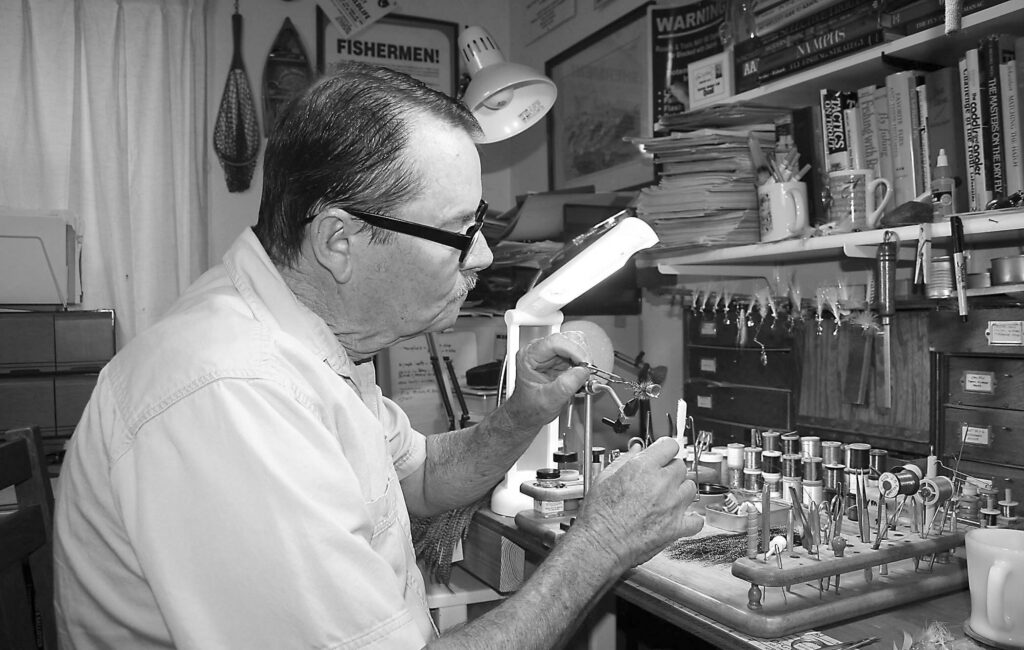
I’ve seen it suggested on a number of fly-tying websites and bulletin boards that hitting a few fine restaurants to barter for their discarded wine corks might work. One wag even suggested that you purchase the wine in crateloads and drink it yourself to get the corks. Doing so might be fun, but probably won’t result in much good tying. Still, the basic idea is right. A Web search for companies that specialize in wine-bottling equipment and supplies will get you good-quality Portuguese wine corks to work with, plus the new artificial corks that are coming into use.
I’ve tied poppers with each, and both are good materials that float well and are sturdy — plus, they smell good if you get them used. The only drawback is that most of the suppliers of new bottle corks I’ve located want you to purchase huge quantities — not good, unless you are tying for commercial sales. You might think about getting two or three bug-tying buddies to place an order and then split it up to reduce costs.
Balsa is a choice that some bug builders favor. I use it for some patterns, most notably Tom Loving’s wonderful Gerbubble Bug. This squarish little balsa bug looks a lot like a small baitfish lying on its side, and a few twitches make it look like it is struggling to right itself. It’s the kind of presentation that appeals to ambush predators such as bass. They like stuff that looks injured and easy to catch.
Balsa, like cork, has advantages and disadvantages. On the plus side, the stuff is as light as, well . . . balsa. It also is pretty easy to find in quantity. Almost all hobby shops and many craft stores stock it at affordable prices prices. It is easily shaped with nothing fancier than simple sandpaper, and it takes paint well after you coat the material with a sealer. The drawback is that balsa is fragile. Smack a balsa bug into something hard, and it will fracture. You can coat balsa with epoxy or other clear finishes to gain strength, but you add weight when doing so.
Still, you can craft some wonderful bass bugs and poppers using this material. Some will break through normal usage, but you might also catch big bass on balsa bugs, which are especially useful where you need the popper to land with scarcely a ripple. They drop to the surface as gently as anything short of a single feather, and if you shape the front end correctly, they will pop with the best of materials.
In recent years, artificial materials have come to the fore. Foam, both hard and soft, has made quite an impression on fly tyers almost everywhere. I’ve tied plenty of small, hard-foam pencil poppers for both bass and striper fishing. This material is sturdy and will take a lot of punishment, but the poppers are slightly heavier for their size than either cork or balsa. As a result, they float lower in the water than a cork body, and you have to put a little more emphasis on the retrieve to get them to pop well. Other than a bit of extra weight, which is nicely offset by their ruggedness, the only problem with hard foam for bug bodies is that the foam does not work well with some finishes, such as lacquers.
One odd body material that I just learned about is the wood of the California buckeye, a native tree that occurs in the foothills in oak woodlands. Jim Matthews, a fellow outdoor writer, is constantly trying this or that kind of wood to produce custom quail calls that he makes for upland bird hunters. Jim is also a fly tyer, and when he got his hands on a sample of California buckeye, he realized it is both strong and very light. (See his story in this issue.) He informs me it makes a good, if slightly heavy popper body. I’m not sure you should run around the national forests cutting down buckeye trees, but if you can locate a dead one, you might as well experiment with this wood.
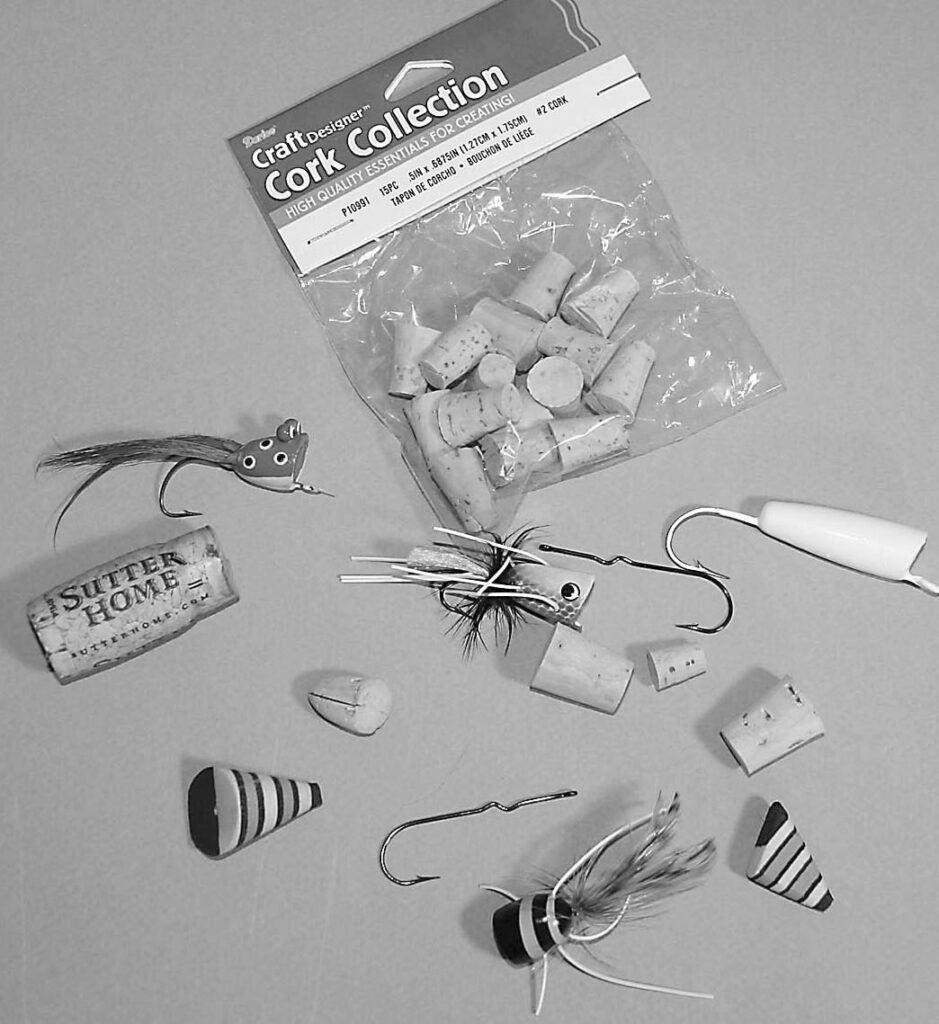
Soft Bodies
Soft foam of the high density, closed-cell kind is another great high-floating material for bug bodies. You can walk into a fly shop and walk out with just about any size or color of high-density soft-foam body you desire. The fly-tying industry has embraced soft foam in a big way, and you can purchase ready-to-use bodies already shaped and colored that mimic everything from baitfish to frogs. The soft-foam bodies can also be painted, but since they normally come in ready-to-use colors, I usually just tie them without additional color, other than using Pantone markers to add spots or stripes.
If you want to make your own soft-foam bodies, a good source for brilliantly colored closed-cell soft foam is discount stores, where you can find plenty of inexpensive beach sandals or flip-flops, often for a buck or two for a pair. Some are built with laminated sheets of different colors, making attractive bug and popper bodies once you’ve cut and sanded the foam to the proper shape.
I’ve found a lot of my stock of old beach sandals at local lakes, where recreational boaters seem to lose them by the dozens each busy weekend. Walking the shoreline and picking them up while fishing gives you free fly-tying materials and helps keep your favorite waters clean. You can cut dozens of popper bodies out of each, and the foam is easy to shape. I recently discovered an overrun stock in a 9 Cent Store and loaded up on several colors for my bug making. Spring is getting the blood flowing in both the bass and the fly fishers who value them. It’s the right time to get busy and build enough bass poppers to equip yourself for the top-water season.



